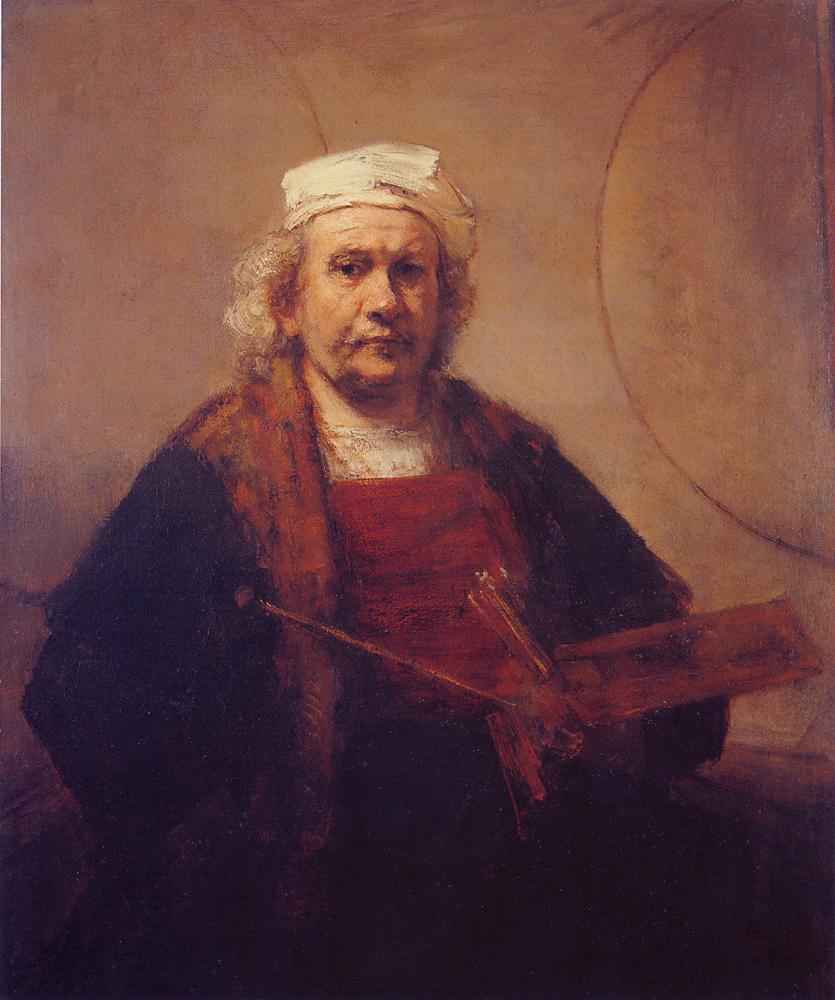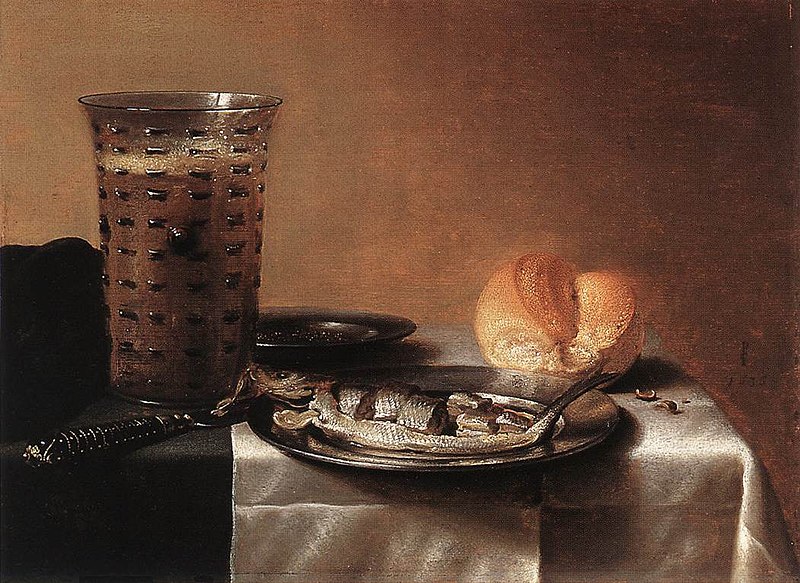Professor: [mock dismissive sigh, upon seeing the Pesaro Altarpiece that I'd chosen to start with] what's WITH you and all these Italians?
Me: I have to get them in somewhere.
Professor: I talk about them in class! We did the Sistene Ceiling...last week.
Me: You don't pick any Italians that I like!! [he cracked up]
Later on we decided to keep the Pesaro (as well we should, it's MAGNIFICENT, though he made me cut the Gentileschi) because as he stated, "The Pesaro is a great work of art, not *just* for an Italian, but for art history in general." I think my response was probably, "gee, thanks a lot."
There are a lot of amazing aspects of Northern Art that I sort of knew about but not really, which is why having to sit in on this Art 102 class is so helpful. The fabrics, for one thing. The textural attention to detail, which promotes prolonged looking, means that you have to spend time with these works, to figure them out, to get to know them. My classes get to visit the museum tomorrow, and one of the works we'll be looking at is a Flemish Adoration of the Magi. Two friends and I spent 1/2 an hour in front of it yesterday, just staring at the jewels on the Magis gifts, the gold weave in the cloth, and the lines in peoples hands. (And getting yelled at for being too close. Whoops!)
So here are some works that I've encountered in class or lectures in the past few days. I'm not going to talk too much about them, because if they could be explained by words they wouldn't have been painted. Also, I totally recommend that you check out the Rijksmuseum's website--amazing high resolution photographs of works.
It's a grey day, we're under a wind advisory, and it's been raining straight since Monday. I have cramps, and am cuddled up under a blanket--one major perk about grad school is that if you do not have class on certain days (and Thursdays I don't) you can do a lot of work from the comfort of your bed, in sweatpants. And pretend you are in Belgium, where according to my professor you can "eat leek soup that is about a pound of butter and a pound of cream for every three leeks, and waffles that are dripping with goodness and are the size of your face." Works for me. (And the art ain't half bad, either!)
It's a grey day, we're under a wind advisory, and it's been raining straight since Monday. I have cramps, and am cuddled up under a blanket--one major perk about grad school is that if you do not have class on certain days (and Thursdays I don't) you can do a lot of work from the comfort of your bed, in sweatpants. And pretend you are in Belgium, where according to my professor you can "eat leek soup that is about a pound of butter and a pound of cream for every three leeks, and waffles that are dripping with goodness and are the size of your face." Works for me. (And the art ain't half bad, either!)

Vermeer, The Milkmaid (or The Kitchen Maid) c. 1658
I encourage you to open a larger view and look at the milk. And the bread. And the buttons on her bodice. Also, Vermeer painted nail holes in walls, to show where nails had been and then removed. If that doesn't scream "prolonged looking," I don't know what does.

Vermeer, The Love Letter, c. 1669-70
The wall on the left has creepy stains on it. I just went to a lecture on this painting. If you look at it sideways, like as if you were approaching it from an oblique angle, the perspective changes in cool ways.
The wall on the left has creepy stains on it. I just went to a lecture on this painting. If you look at it sideways, like as if you were approaching it from an oblique angle, the perspective changes in cool ways.

Judith Leyster, Self-Portrait, 1630ish.
I know this is one of her best known works, but I wrote about it last year, and love it. Her flower paintings are spectacular, as are her human scenes, although those are sometimes a mixed bag. (If peoples cheeks are too ruddy, it annoys me.)
 Frans Hals, The Laughing Cavalier, 1624.
Frans Hals, The Laughing Cavalier, 1624.We spent some time on this in 102 this week. Is he really laughing? Or is he really just kind of sceptically smirking at us? If you look at the details of his brocaded sleeve (gosh, so gorgeous) you can see little swords and bees. So maybe, he is acknowledging that life is hard, but it is more pricks (beestings) than kicks (like, being stabbed). And that once we acknowledge that, like the Epicureans, we can LIVE. Because it's what we've got, and we might as well live with what we have. (This argument is for anyone who thinks portraiture is just a pretty picture of a pretty person. Although, the lace in this one is so stunning, that I find myself focusing on that.) Frans Hals cheeks are also sometimes TOO ruddy. Am I too picky?
Samuel van Hoogstraten, View of an Interior (or The Slippers), 1654-1662
This is another work which I saw recently discussed in terms of Dutch perspectival inventions. It's a view into another room, and probably would have hung in a hall, giving more dimensions to the hall itself, too. van Hoogstraten is also known for his work with perspective boxes, so there seems to be something about that here too.
 Rembrandt van Rijn, Self-Portrait, 1665-69.
Rembrandt van Rijn, Self-Portrait, 1665-69.There are entire books about Rembrandt's self-portraits (with good reason!!) and they are probably my favorites of his works, although I do love most of his paintings. Especially this one. He's so frank in his gaze that it makes me sad, the aging artist who grew up in front of his viewers (there are something like 76 known self-portraits that he completed). The circles behind him may represent his artistic skill, the ability to draw a free-hand circle, even at an advanced age. I can't draw a free-hand circle now.
Pieter Claesz, Still-Life with Herring, 1636.
Couldn't end without a still-life! And there are so many more. We looked at this in class. Herring = aphrodisiac. Fun fact.


No comments:
Post a Comment